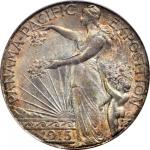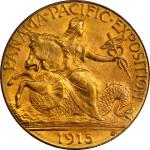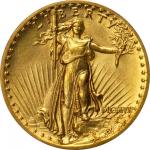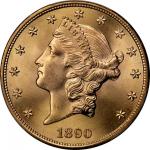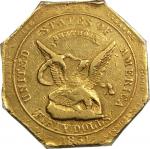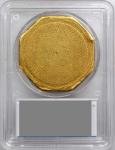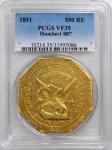This evenly toned, khaki-olive example is an exceptional mid-grade survivor of this challenging territorial gold type. The major design elements are boldly outlined, with sharper detail remaining to some of the eagle s feathers, many of the shield stripes and much of the target design on the reverse. The obverse periphery is often softly defined with little detail, especially on examples that have seen such extensive circulation, yet here the date remains relatively sharp, as do most of the letters in the words UNITED STATES ASSAYER OF GOLD CALIFORNIA. The word HUMBERT is also legible, but of AUGUSTUS only the last couple of letters can be discerned. Scattered handling marks and a few rim bruises are noted, all of which are commonplace on these large, weighty $50 gold coins. It would be difficult to find a nicer Humbert "slug" in a Choice VF holder. Don Kagin lists two varieties of the 1851 Reeded Edge, 887 THOUS., Target Reverse $50 in his standard reference Private Gold Coins and Patterns of the United States (1982). Kagin-7, as here, is by far the rarer of the two, and it is distinguished from K-6 by having smaller concentric circles in the center of the reverse and the peripheral ribbon on the same side distant from the border. This is the reverse design that would later be used to strike the 1852 Humbert $50. This is the first example of the 1851 K-7 $50 that we can recall handling. James Wilson Marshall s discovery of gold in California s American River on January 24, 1848, kicked off the largest, and certainly the most romanticized, gold rush in United States history. As news of this discovery spread, 300,000 people from both the Eastern United States and abroad would eventually make their way to California seeking wealth and prosperity. Some did strike it rich, although most were less successful. The Gold Rush and the large influx of people that it brought to California (the first great surge of which came in 1849, hence the popular cultural term "Forty-Niners") resulted in immense changes in American life, both in California and throughout the burgeoning nation. For example, the close proximity of San Francisco to the gold fields made it an attractive port of entry for those arriving in California by sea, and also as an outfitting center and base of operations for gold seekers. A small settlement of 200 souls in 1846, San Francisco had grown exponentially into a city of 36,000 people by 1852. With great change and, ultimately, great progress, came trials and setbacks. Such a tremendous surge in population in a short period of time resulted in an acute shortage of circulating currency. There was no established mint in the area when the Gold Rush began, and what little coinage the "Forty-Niners" and others brought with them was woefully inadequate to sustain an economy. Gold dust, quickly adopted as a medium of exchange, proved difficult to work with. There was the additional problem of what to do with all of the gold that was being mined. Clearly it needed to be converted into a form that was universally acceptable so that it could not only be used in commerce in California, but could also be transported to New York, Philadelphia and other major economic centers. To meet the immediate economic needs of Gold Rush California, various private minting firms sprang up in and around San Francisco. Some were short-lived and produced few coins and/or ingots, often of poor quality, and sometimes of inadequate weight and/or fineness. The firm of Moffat & Co. became the most important private minter serving the California Gold Rush. As early as 1849 proposals were introduced both in the California Legislature and United States Congress calling for the establishment of an assay office or branch mint in California. Competing political interests delayed action on the federal government s part, and most Californians wanted more than simply a state-run assay office. A federal branch mint was desired to convert newly mined gold into large coins and ingots and also to strike much needed smaller denomination coins. A compromise bill, passed through Congress on September 30, 1850, established the United States Assay Office, to be located in San Francisco. Moffat & Co. received the contract to operate as the United States Assay Office, with New York watchmaker Augustus Humbert appointed as United States Assayer. Humbert arrived in San Francisco on January 30, 1851, bringing with him the first dies for coinage that had been prepared by Charles C. Wright. The first coins -- $50 gold pieces -- were issued under Humbert s authority the following day, with ingots following on February 14. The United States Assay Office continued to operate with these principals until the dissolution of Moffat & Co. in early 1852, after which the federal contract was assumed by Curtis, Perry & Ward under the name of the United States Assay Office of Gold. Humbert remained as assayer under the successor firm. Curtis, Perry & Ward eventually sold their coinage facility to the United States government, which expanded it slightly, added new equipment, and opened it as the San Francisco Mint in March 1854. The operations of the United States Assay Office in 1851 and 1852 represent an important and defining chapter in the coinage history of the California Gold Rush and, indeed, the nation as a whole. This rare piece, from Humbert s first year as assayer in California, offers the advanced collector an important opportunity to own one of the most impressive mementos of this avidly collected era in United States frontier history. , Est. $17,500-$30,000





